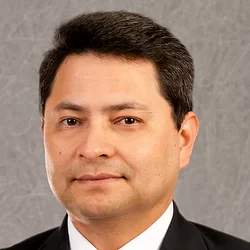The International Poultry Scientific Forum is an annual gathering with worldwide impact where multiple research reports are presented. This year, 1,523 registered participants had the opportunity to receive original information in 210 oral presentations and 169 posters. These presentations included diverse topics of poultry production, but almost half were related to nutrition. Due to the limited space of this publication, only a few papers were selected to be highlighted within four key topics: minerals, enzymes, evaluation of soybean meal quality, and feed formulation. The objective is to use these research results to comment on some advances in understanding crucial aspects of practical poultry nutrition.
Minerals
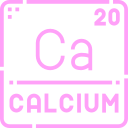 Calcium (Ca) is usually the cheapest nutrient in poultry diets. However, it significantly impacts nutrient utilization, gut health, bone mineralization, meat quality, and performance.
Calcium (Ca) is usually the cheapest nutrient in poultry diets. However, it significantly impacts nutrient utilization, gut health, bone mineralization, meat quality, and performance.
Calcium dietary concentration, particle size, and solubility are the main factors to observe in feed formulation and source selection.

A research project presented by Joseph Gulizia from Auburn University evaluated particle sizes (200 and 910 µm) together with three levels of Ca concentration under a necrotic enteritis challenge.
Three Ca levels (Adequate, Reduced, and Low) were created by a two-step 10-point reduction from the quoted Adequate Ca concentration for each phase (Starter: 0.95%; Grower: 0.85%; and Finisher: 0.75%).
- The necrotic enteritis reduced body weight gain and increased feed conversion ratio but did not cause mortality.
- The limestone particle size did not affect tibia mineralization.
- The Ca level affected growth and FCR.
- Better results were observed in chickens fed with adequate and reduced Ca levels than in Low.
- The larger particle size (910 µm) improved the feed conversion ratio in the Ca-adequate group. However, the same parameter was increased when chickens were fed the Low-Ca diets.
- The Low Ca-diets also had detrimental effects on tibia weight and strength.
Consequently, this study demonstrated that diets with adequate Ca or reduced 0.10% in each phase could support adequate performance under necrotic enteritis.
The same research group (Tabish et al.) also reported that Ca levels and particle size also affect the diversity of the intestinal microbiome in broilers after a subclinical necrotic enteritis challenge. Those gut microbial changes could partially explain some effects of high Ca levels previously reported on intestinal health.
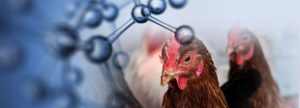
There is an increased interest in using digestible Ca and P values in feed formulation to account for the significant variability of these minerals in the diverse sources available. However, the multiple factors that can affect digestibility values in sources of these minerals have limited the adoption of these values.
One partial solution can be the determination of standardized ileal digestibility (SID) values. These means to determine the basal endogenous losses (BEL) of these minerals to make a standardization. Lee et al. from Kyungpook National University in South Korea presented a project evaluating Ca and phosphorus’s SID.
A Ca-P-free diet was formulated to estimate the BEL of Ca and P. Three other semi-purified diets were prepared, each containing monocalcium phosphate (MCP), dicalcium phosphate (DCP), or monosodium phosphate (MSP), with limestone as the sole source of Ca, P, or both Ca and P. These diets provided 4.21 g/kg of non-phytate P from MCP, DCP, or MSP, and the MSP with limestone diet included 7.5 g/kg of Ca. All diets included 5 g/kg of chromic oxide as an indigestible index.
- The BEL values for Ca and P were determined to be 58.98 and 66.37 mg/kg of dry matter intake, respectively.
- The SIDs of MCP, DCP, and limestone were found to be 84.8%, 70.1%, and 52.6% for Ca, respectively.
- Meanwhile, the SIDs of MCP, DCP, and MSP were 91.7%, 76.8%, and 94.4% for P, respectively.
Due to the variation in Ca digestibility observed, it is essential to start considering the application of these values in feed formulation. However, specific requirement values of digestible Ca and P for each phase are needed.

Enzymes
An interesting common belief shared by many nutritionists was addressed in the research conducted by Bowen et al. from West Virginia University. Some nutritionists tend to accept that when birds access litter, they consume phosphorus; consequently, people may think that lower phytase concentrations could be required.

This idea is based on the observation that most phytase research has been conducted raising broilers in wire cages, but commercially built-up litter is more commonly used.
This study evaluated this issue by feeding chickens raised in wire cages or floor pens.
- The diets evaluated included a nutritionally adequate positive control (PC; 0.90% calcium and 0.45% nonphytate phosphorus [nPP]) and a negative control (NC; 0.65% calcium and 0.20% nPP) pelleted diet.
- Phytase was added to the NC diet at 250, 500, 1,000, 1,500, 2,000, and 2,500 FTU/kg.
- Growth performance and tibia ash data were analyzed in a two-way analysis of variance (ANOVA) with a factorial arrangement of treatments.
- In both housing systems, at least 1,500 FTU/kg were necessary to have body weight and tibia ash similar to the observed in chickens fed the PC diet at 21 days of age.
- The values observed at this level of phytase were significantly higher than the body weight and bone ash values obtained with chickens fed the NC diet.
Consequently, the potential litter consumption does not significantly influence broiler performance or bone ash.
Evaluation of Soybean Meal Quality
 Dr. Nelson Ruiz is a professional who has contributed for several years to methods of evaluating soybean meal quality, the most common protein source for poultry.
Dr. Nelson Ruiz is a professional who has contributed for several years to methods of evaluating soybean meal quality, the most common protein source for poultry.
This year, he presented another elegant paper describing a research project that determined that KOH protein solubility (protein that is solubilized in a potassium hydroxide solution) and trypsin inhibitor analyses are needed to determine soybean meal quality.
The search for the best methods to evaluate the processing and nutrient quality of soybean meal extracted by solvent is a concern worldwide for the feed industry. Multiple analytical techniques have been developed for this purpose. Some of these methods are the urease index, KOH protein solubility (KOHPS), protein dispersibility index (PDI), trypsin inhibitor activity (TIA), reactive lysine, and the ratio of reactive lysine to total lysine. However, each parameter provides only partial information of quality.
This particular project evaluated the relationship between KOHPS and TIA. The former measures overprocessing, and the latter is a parameter for both over and underprocessing.
The TIA has two analysis methods, and results can be expressed as trypsin units inhibited (TUI) per mg of sample or trypsin inhibited (TId) per g of sample.
The group led by Dr. Ruiz concluded that soybean meal that is adequately processed, especially not overprocessed, exhibited 80 to 85% KOHPS, which correlated with 0.88 digestible lysine coefficient or greater but could have variable TIA.
Some of these samples contained 3.5 to 5.33 TUI/mg (2.5 to 3.0 mg TId/g), and the field assessment in commercial broiler flocks indicated satisfactory performance.
However, some of these samples contained 6.4 to 12.82 TUI/mg (3.4 to 4.99 mg TId/g), which correlated with the observation in the field of rapid feed passage and poor zootechnical performance in broilers in diverse countries.
There was a high relationship (R2 = 0.956) between KOHPS and digestible lysine when TIA was below 5 TUI/mg (below 3.0 mg TId/g), indicating no interference in the relationship between KOHPS vs. digestible lysine due to TIA. Nevertheless, when TIA was above 5 TUI/mg, this relationship was not significant, indicating that TIA must be addressed in feed formulation before defining the correct digestible lysine spec for soybean meal.
These results indicated that the two parameters, KOHPS and TIA, are necessary. Additionally, this group observed a positive relationship (R2 = 0.79; P < 0.05) between the AOCS enzymatic 2020 method (TUI/mg) and the EVONIK NIRS (TId/g) method (AminoNIR®). The NIRS technology can facilitate a complete evaluation of soybean quality.
Feed Formulation
Feed formulation has been done with least-cost linear programming methods for many years. Nevertheless, many alternatives are available to optimize formulation by objectives,
- for maximum profit,
- to minimize nutrient excretion,
- to account for non-linear responses to levels of nutrients or enzyme activity, and
- to deal with nutrient variability.
The formula provides a 50% probability of meeting the minimum nutrient specifications in linear programming. This is because linear programming assumes the nutrient profile is fixed, only uses average values, and ignores nutrient variability, which is assumed to have a normal distribution and a centered mean. 
Commercial nutritionists use margins of safety either on nutrient constraints or nutrient means to deal with the uncertainty of meeting the nutrient specifications. This adjustment can be applied on a per-nutrient basis as a percentage or some portion of nutrient standard deviation, generally only half. Since the nutrient values after adjustment remain fixed, the margin of safety is a linearized approximation used to fit into linear programming.
Alternatively, nutritionists may use stochastic programming for feed formulation, allowing non-linear constraints. This method has been shown to account for nutrient variation and provides nutrients at specified confidence levels.
Several researchers and some feed formulation companies explored stochastic formulation in the 1990s and early 2000s. However, nutritionists never embraced this development. Probably, one significant limitation at that time was to have enough data on the complete nutrient composition of feedstuffs to apply it.
In the past decade, the number of analytical labs has increased, and NIRS has become a standard tool with more reliability than in its early stages 20 years ago. Consequently, the amount of nutrient composition data has increased rapidly, and the feed industry is conscious of the variability in the diverse sources of primary feedstuffs like corn and soybean meal.
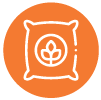 Caleb Marshall from North Carolina State University presented an exercise to evaluate the financial impact of using the nutrient variability information of soybean meals that vary by country of origin in the stochastic programming of broiler diets. This exercise was conducted with a spreadsheet developed in Excel. Data from the Adisseo Precision Nutrition Evaluation System was used to characterize soybean meals from Argentina, Brazil, and the United States in two years that have considerable nutrient and energy content variability. Notably, increased soybean meal variability resulted in higher utilization of SBM, DDGS, and poultry fat to meet the minimum nutrient requirements.
Caleb Marshall from North Carolina State University presented an exercise to evaluate the financial impact of using the nutrient variability information of soybean meals that vary by country of origin in the stochastic programming of broiler diets. This exercise was conducted with a spreadsheet developed in Excel. Data from the Adisseo Precision Nutrition Evaluation System was used to characterize soybean meals from Argentina, Brazil, and the United States in two years that have considerable nutrient and energy content variability. Notably, increased soybean meal variability resulted in higher utilization of SBM, DDGS, and poultry fat to meet the minimum nutrient requirements.
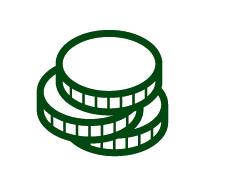 Overall, stochastic programming achieved cheaper diet cost at a higher confidence in meeting nutrient specifications compared with a margin of safety at either 5% or using half of a standard deviation. Feed prices in stochastic programming can be reduced between $2.65 and $3.61 per ton compared to a margin of safety with half standard deviation.
Overall, stochastic programming achieved cheaper diet cost at a higher confidence in meeting nutrient specifications compared with a margin of safety at either 5% or using half of a standard deviation. Feed prices in stochastic programming can be reduced between $2.65 and $3.61 per ton compared to a margin of safety with half standard deviation.
The annual cost savings using stochastic programming could be between $896,372 and $658,000 for a company producing one million broilers per week. These calculations were made using parameters determined by AgriStats (The US Benchmarking Company), indicating that a $1/MT change in feed cost equals $282,077 per year in a broiler company of that size.
The main limitation to implementing stochastic feed formulation is the lack of commercial software with solvers able to do non-linear programming functions.
These and other topics will be expanded in the following issues of NutriNews International.
